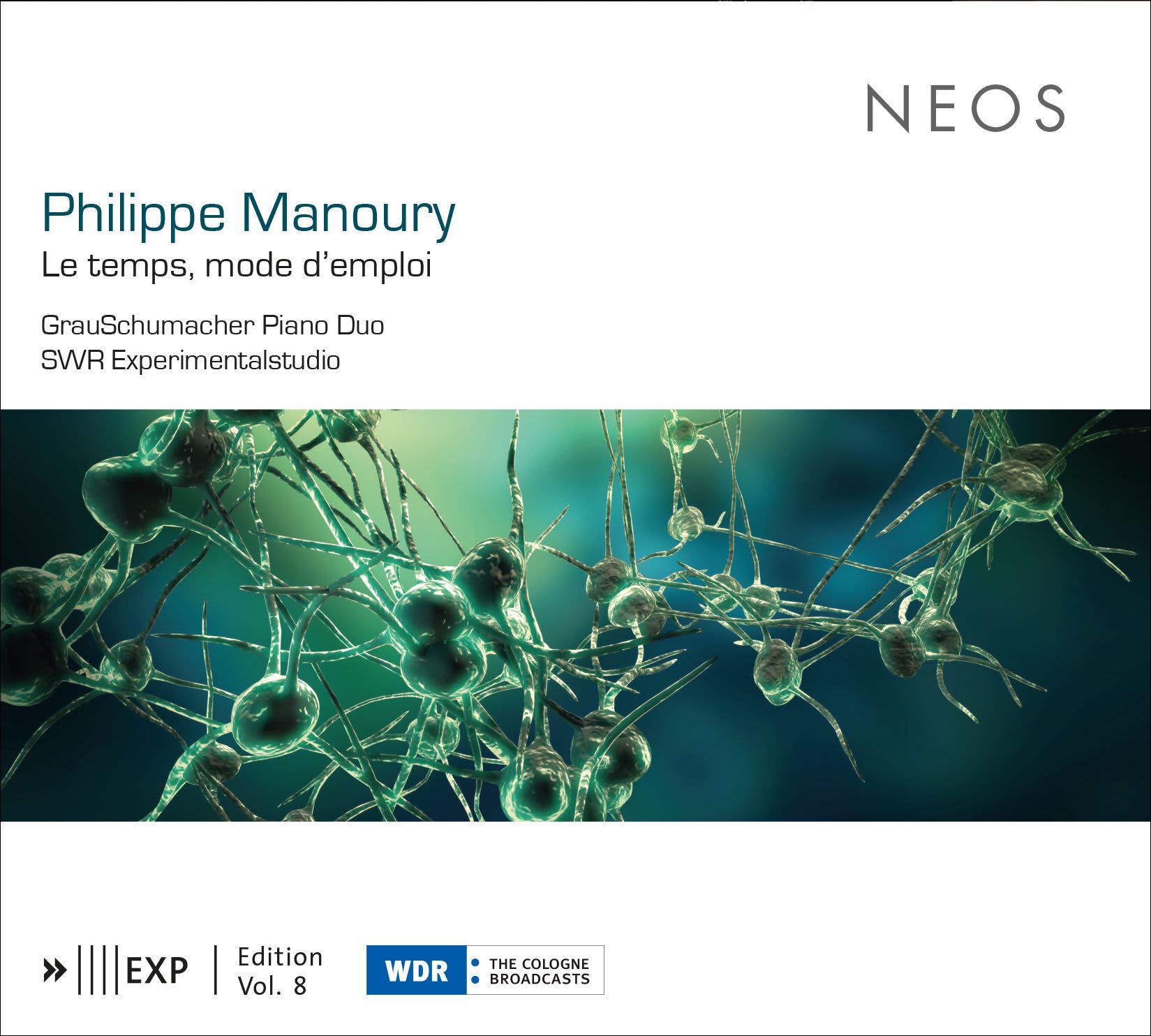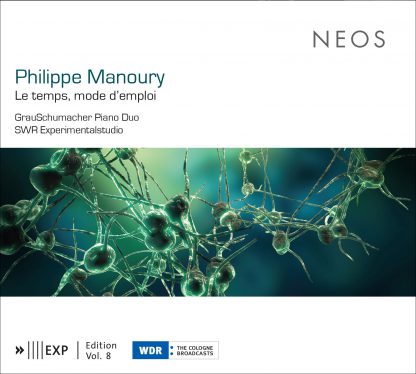Περιγραφή
Καλλιτέχνες
|
PHILIPPE MANOURY · LE TEMPS, MODE D’EMPLOI Le temps, mode d’emploi is a large musical fresco on various ways to express time. Contemplative or active time, delayed or real time, continuous or discontinuous, smooth or pulsed, suspended, revisited, circular, diffracted … the physical or musical time but also the psychic time. Time is not just a repository containing our lives, actions and perceptions, it could have its own structure, a sort of envelop which put a mark on us. Music was always the best way to express that, much better than any other medium. Before having written a single note, I decided to work based on these modes of temporal organization. The two pianos are surrounded by four virtual pianos and a very complex system of sound synthesis, signal processing and spatialization. Composed in eight sections, which are linked, and responding each other, the work covers 58 minutes. Philippe Manoury Various Ways to Describe Time Philippe Manoury composed his examination of time, a commission for the Witten Days for New Chamber Music, in 2014. He appropriately calls it a “large musical fresco”, exploring “different ways of handling time”. Of course, describing music as a medium of time comes across almost as a cliché. But the basic principle of the compositional process in this case is enhanced and expanded in an altogether labyrinthine fashion. In eight consecutive sections Manoury unfolds different characters of time: right at the beginning time appears to be in turbulence, superseded by more contemplative and calm islands constituting the experience of time. Insofar, time here is not merely a physically measurable entity, but also something that is subjectively felt, mirroring psychological states. Live-electronics play the crucial role in spatializing time. The two real pianos are positioned at the centre of the space. On the periphery, they are surrounded by four virtual pianos, heard through loudspeakers. In this way Manoury implements the words appearing in Richard Wagner’s last opera, Parsifal: “Zum Raum wird hier die Zeit” (Space turns to Time). But the spatialization of the piano sound from real to virtual is only one aspect of the live electronics in this piece. They also bend the piano sound towards what may be at its origin altoghether: a bell sonority. The work’s title Le temps, mode d’emploi (Time, A User’s Manual) should not be taken too literally in the sense of a technical operating manual. It is to be understood more in a poetic way. It could be a reference to George Perec’s novel La vie, mode d’emploi (Life, A User’s Manual), published in 1978. In Perec’s magnum opus the reader gets lost in a kind of literary maze that he then had to find his way through. By means of live electronics Manoury constructs in Le temps, mode d’emploi an acoustic labyrinth, that puts the listener in different spatial configurations of piano sounds. It is also a temporal labyrinth in a historical sense, where different kinds of Ariadne’s thread can be layed out. The sound transformations towards a bell sonority point to downright mythical antecendents of the piano sound. This procedure is also reminiscent of Pierre Boulez’ composition Répons for ensemble and live electronics. In the seventies, Manoury was able to witness the emergence of IRCAM in Paris, the famous Institute for Research and Coordination in Acoustics / Music, primarily set up for the first realisation of Répons. Thus, many of the methods developed at IRCAM are also applied in the live electronic processes of Le temps. The pianistic gestures of fast virtuoso commotion and contemplatively resting chords are, however, reminiscent of Boulez’ late piano labyrinth sur Incises. In the choice of instrumentation, piano duo and live electronics, Karlheinz Stockhausen’s Mantra from 1970, one of the founding pieces of such compositional processes, rings like a fading echo. And the bell sounds of the live electronics ultimately lead back to a key work by Igor Stravinsky, which again was instrumental to Boulez for Répons and sur Incises: his cantata Les noces, completed in 1923. At the end of this piece the symbiosis of piano and bells is the pivot – back then without electronic procedures, of course. None of this Manoury imitates. The temporal layers unfolding in his piece are not merely of a physical, but also of a psychological and historical nature, as he himself points out. In that sense, he understands time as the vessel containing and enveloping our lives – which in poetical terms might lead us back to Perec’s labyrinthine description of life to be read as a user’s manual. Bernd Künzig Translation: N. N. |










